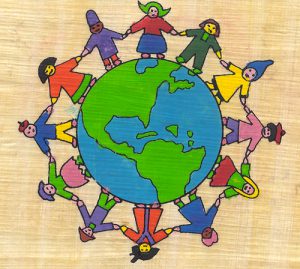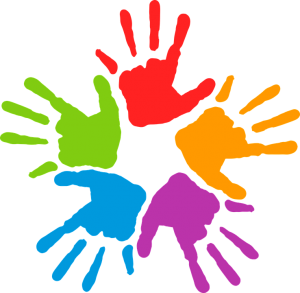We all know the importance of the 4 big skills in a world language class: reading, listening, speaking, and writing. Encouraging the development of each one in our students brings with it a unique set of challenges, approaches, and assessment methods. (And, given our classroom time constraints, we probably also know how hard it can be to find the time to assess each one adequately!)
Then, of course, there's cultural competency. I know I certainly want my students to recognize that language learning isn't merely the memorization of vocabulary lists and verb endings. Language learning is a path towards interacting meaningfully in multilingual and multicultural communities. As ACTFL (the American Council on the Teaching of Foreign Languages) states, it's critical that we enrich our students' experience in the classroom, broadening their horizons by inculcating cultural awareness and empathy.

But this is a pretty lofty goal! How can we balance such a long-term (though certainly important) goal with more day-to-day challenges such as teaching the basics of communication? How can we assess cultural competency? Or should we assess cultural competency at all?
Should we ask our students to memorize facts about other peoples and practices and then spit them back at us on a test or quiz? That seems a bit boring, a bit old-school, and may drive students away from exploring something for its own sake. Plus, their performance on a true-false or multiple choice quiz may not accurately reflect how they engaged personally with the topic! It's also a good bet that once that quiz or test is graded and returned, the students will forget all about what they studied.
Or should cultural competency assessment be project- or research-based? This is a common approach and allows for individual student creativity. The downside here is that cultural knowledge can often be divorced from authentic language usage in the classroom, though project-based learning is catching on and addresses this problem.
Another way, which I often use in my own classes, is to turn cultural competency assessments into linguistic assessments as well. In other words, they're embedded in speaking, listening, reading, or writing activities. Oftentimes, I try to approach the same cultural topic from as many different angles (reading, writing, listening, speaking) as possible. Here's a recent example from one of my Spanish classes:
- First we read a short text about Chichicastenango, a market in Guatemala. Then we practiced listening comprehension by watching a short video tour (in Spanish) through the market. Lastly, students wrote a short "postcard" to their parents telling them everything that they were seeing, smelling, hearing etc., which also served as practice using the present progressive.

With this series of activities, students were able to simultaneously explore a cultural topic, be held accountable for understanding the specifics (who, what, where, when, why), and hone their communicative abilities. The students never felt as if they were being asked to memorize decontextualized facts and we didn't lose a lot of class time on a multi-step, non-target-language project.
And let's not forget about Extempore! This, of course, is another great way to embed cultural competency in linguistic-oriented classroom activities. After exploring a particular topic, such as a dish, a painting, or a festival, ask students to report on Extempore about what they learned and why it resonated with them via a "voicemail" left for the teacher. An image-prompt on Extempore is an especially handy way to accomplish this goal as it provides the initial spark for conversation. As a teacher, you'll be able hear individualized student responses that demonstrate what they saw as meaningful about the cultural topic.

No, it's definitely not easy to squeeze in reading and writing, speaking and listening, and then to throw in cultural competency, but that challenge is part of the fun. Students crave access to cultural phenomena and it's a top priority to expose our students to them in diverse ways. Let us know if you have another way to stimulate cultural awareness in your world language classroom!



